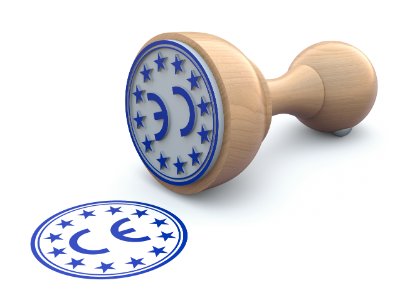







CE stands for Conformité Européenne, which translates from French to English as ‘European Conformity’. CE marking states that a product meets the requirements of all applicable EU directives. While for some products, CE marking can be carried out by the manufacturer themselves, other products must be tested by a company that offers CE marking services.

CE marking does not mean that a product was made in the EEA, but states that the product is assessed before being placed on the market. It means the product satisfies the legislative requirements to be sold there. It means that the manufacturer has checked that the product complies with all relevant essential requirements, for example health and safety requirements.
CE certification was defined by the European Union to control the quality of products as well as possible. It is necessary to include this certificate on products that are produced in Europe or imported into EU member states.
CE marking assures your product can enter the European Union and allows free movement throughout the nearly 30 countries that make up the European Economic Area, giving you direct access to over 500 million consumers. If a product that should display a CE mark is found not to have one, the manufacturer or distributor could be fined and face expensive product recall – so compliance is essential.
CE certification is unlike other comparable certification marks in that no single authorizing body or organization grants certification. Manufacturers are responsible for ensuring the CE marking is used appropriately and that products are compliant with all applicable directives and regulations.
Manufacturers must follow these steps to affix a CE marking:
How to draw up the technical documentation?
The technical documentation should include at least:
Note:
For items with elevated safety concerns like gas boilers, ensuring safety isn't solely the responsibility of the manufacturer. Instead, an impartial entity, typically designated by national authorities as a notified body, must conduct a safety assessment. Only after this assessment can the manufacturer apply the CE marking to the product.
As a manufacturer, you should be able to demonstrate where and how the various parts of the document are held and maintained.

Groups of products which require CE marking:
In the current era, organizations are dedicated to showcasing their dedication to excellence by continually enhancing and adhering to industry standards in Quality Management Systems (QMS). To accomplish this goal, many organizations undergo audits to evaluate their compliance with these standards. Two pivotal types of audits, Certification Audits and Surveillance Audits, play distinct roles, each with unique characteristics, timelines, and objectives. Understanding the fundamental disparities between these audits is crucial for organizations striving for compliance and improved performance.
Certification Audit:
A Certification Audit is a comprehensive assessment carried out by an independent certification body to evaluate a company's adherence to specific standards and regulations within an industry. During this audit, the primary objective is to determine if the company's management system, procedures, and practices align with the relevant industry standards or certification criteria.
The Auditor scrutinizes various facets of the organization, including policies, procedures, documentation, and historical records, to ascertain compliance with the prescribed standards. The audit process entails a detailed examination of the organization's operations, interviews with employees, on-site inspections, and reviews of documents.
The main objective of the certification audit is to confirm the organization's conformity to the specific standard and identify areas for enhancement. Issuing a certification or compliance statement is a key goal if the company meets the prerequisites and requirements of the particular standard. To ensure ongoing compliance and certification renewal, certification audits are typically conducted once, often as part of the initial certification process.
Surveillance Audit:
A Surveillance Audit is a recurring assessment performed by a certification body to verify an organization's continued adherence to the regulations of a specific standard. Unlike the certification audit conducted during the initial certification process, this audit is ongoing after a company has been certified to a standard.
The primary objective of the surveillance audit is to ensure that the organization is still following the rules and maintaining the standards and procedures outlined in the certification requirements. It aims to assess the sustainability and effectiveness of the organization's management system, procedures, and controls over time. This involves reviewing relevant documentation, conducting employee interviews, and performing on-site inspections to evaluate the organization's ongoing compliance with established standards. Additionally, it may examine the organization's efforts in addressing any non-conformities and opportunities for improvement.
Updated on : Saturday,May 11th , 2024
To receive more information about the CE certificate, contact Sohatoos consultants.